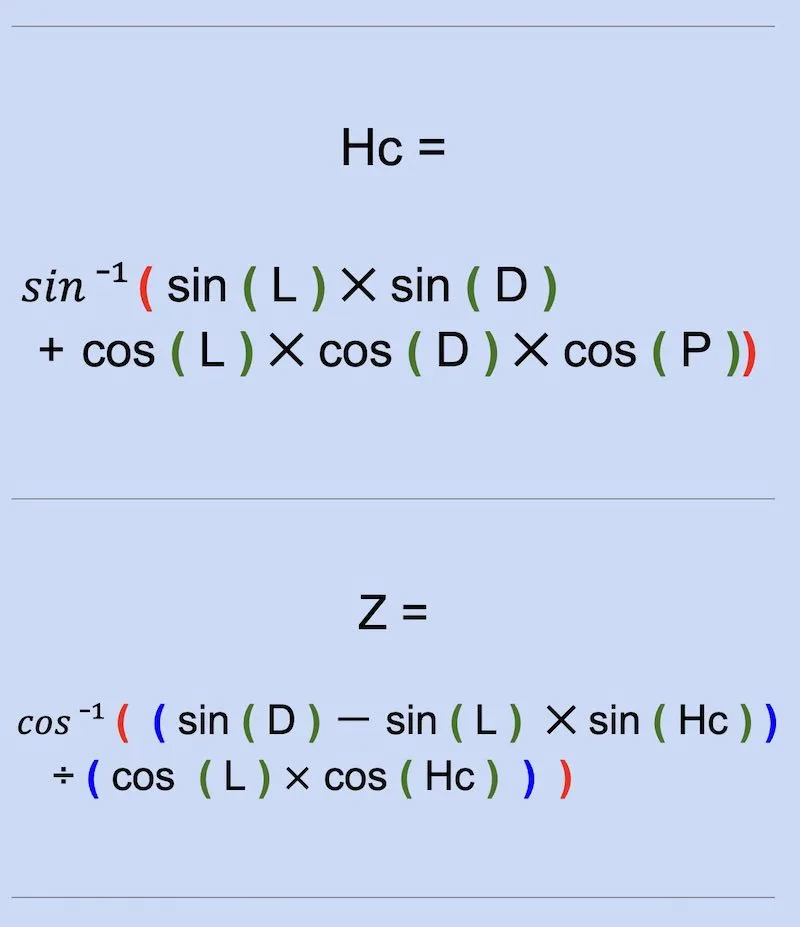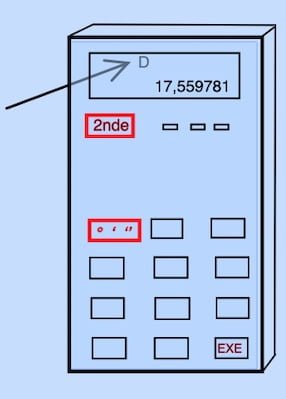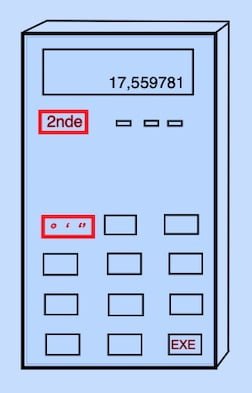sexagesimal system and celestial formulas: the context of celestial calculations and the sexagesimal system, computations involve degrees, minutes, and tenths of minutes.
To facilitate these calculations, one can utilize a scientific calculator to perform the necessary operations.

This page on this self-instruction website emphasizes the importance of using a simple scientific calculator for handling celestial formulas, which are used in the calculation of the Line of Position (LOP).


A common way to measure and express angles in geometry and trigonometry.
-degrees
-minutes
-tenths of minutes
Example: 24°45′.5
Twenty-four degrees and forty-five point five minutes.
and not: 24°45′ 30” (degrees/minutes/seconds)
and not: 24.75833 (decimal degrees)
See also the 360° formulas

sexagesimal system and celestial formulas:
Explanation of the scientific calculator and the sexagesimal system
Also, on this page, I work with the basic scientific calculator from Casio, which contains the DMS function as you can see in the picture below.

Additionally, the programmable versions work differently than the basic scientific calculators.
As a matter of fact, a scientific calculator is extremely useful for solving trigonometric equations.
First, make sure the calculator is set to degree mode (D) and that it contains the button [D M S] or [ ° ‘ “ ]


Sexagesimal system and celestial formulas: Example with scientific calculator (Casio) and sexagesimal system
K=arcsin (sin(24°15’.6 )✕cos(42°45’.2) )
Calculation of K
K=arcsin(sin (24[ ° ‘ ‘’ ]15.6[ ° ‘ ‘’ ] )
✕ cos(42[ ° ‘ ‘’ ] 45.2[ ° ‘ ‘’ ] ))
As a result, The calculator gives us K = 17.559781 (decimal)

[ 2nde ] [ ° ‘ ‘’ ] gives us 17° 33’ 35.21’’ (degrees/minutes/seconds)

Finally, now it’s up to us to convert to degrees/minutes/tenths of minutes
k = 17°33′.6
Here is another example of how to calculate with the scientific calculator. Try it yourself

sexagesimal system and scientific calculator
To clarify how to round seconds in tenths of minutes:
60” = 1′ (60 seconds equal 1 minute)
| 10°10’ 06’’ | ⇨ 10°10’,1 |
| 10°10’ 12’’ | ⇨ 10°10’,2 |
| 10°10’ 18’’ | ⇨ 10°10’,3 |
| 10°10’ 24’’ | ⇨ 10°10’,4 |
| etc… | |
| 10°10’ 26, 28’’ | ⇨ 10°10’,4 |
| 10°10’ 27, 00’’ | ⇨ 10°10’,5 |
| 10°10’ 27, 31’’ | ⇨ 10°10’,5 |
| 10°10’ 30, 00’’ | ⇨ 10°10’,5 |
| etc… |
Hence, even if we are off by a tenth of a minute, it’s not that important

Casio vs. Texas Instruments Calculators
Both Casio and Texas Instruments calculators can perform DMS (Degrees, Minutes, Seconds) calculations accurately, but they handle the process differently.
Casio calculators — such as the fx-82MS or fx-991EX — have a dedicated [DMS] key that allows direct entry and conversion of angles between decimal degrees and DMS format. This makes them very practical for celestial navigation, where angles are always expressed in degrees and minutes.
Texas Instruments calculators also support DMS operations, but their menus and commands vary more between models. They may require additional steps or the use of specific functions to convert or display DMS values.
In practice, Casio’s layout and the presence of the [° ′ ″] button make it faster and more intuitive for solving trigonometric equations used in celestial calculations. However, both brands can achieve identical results once you’re familiar with the functions.
(Tip: always check that your calculator is in degree mode before performing trigonometric operations.)
